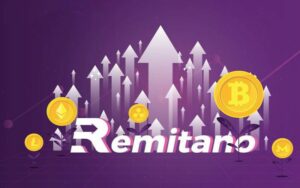When it comes to choosing a cryptocurrency exchange, traders and investors are often faced with a multitude of options. Among the most prominent platforms in the market today are Remitano vs Binance. Both platforms have carved out significant niches, offering unique features, user experiences, and trading capabilities. In this comprehensive guide, we will explore every critical aspect of these two giants to help you make an informed decision about which platform best suits your needs.
This detailed comparison covers everything from user experience and fees to security, trading tools, liquidity, and more. Whether you’re a seasoned trader or a newcomer to cryptocurrency, understanding the nuances between Remitano and Binance will enable you to optimize your trading strategies and ensure a safe, efficient, and profitable experience.
Remitano vs Binance: A Comprehensive Comparison

Choosing between Remitano vs Binance involves understanding their core differences, strengths, and weaknesses. Both platforms serve different user bases and feature distinct operational focuses. While Binance is known for its vast selection of cryptocurrencies and advanced trading features suitable for professional traders, Remitano emphasizes simplicity, peer-to-peer transactions, and a user-friendly interface ideal for beginners and local traders.
In this section, we will delve into the fundamental aspects that set these exchanges apart. From their core mission, target demographics, geographic reach, to overall platform philosophy, knowing these fundamentals will give clarity on which platform aligns better with your trading ambitions.
User Experience in Remitano vs Binance
User experience encompasses platform design, ease of navigation, registration process, and overall usability. It directly impacts how comfortably traders can execute their trades and manage their assets.
Interface Design and Ease of Navigation
Remitano’s user interface centers around simplicity and straightforwardness, making it highly accessible for beginners. Its design employs a minimalistic approach, emphasizing essential trading functions without overwhelming users with excessive options or information. The layout allows new traders to quickly understand how to buy or sell cryptocurrencies through the peer-to-peer marketplace, with clear prompts and step-by-step guides.
Binance, on the other hand, offers a more complex but feature-rich interface designed to cater to a wide spectrum of traders. Its main platform provides various trading views—classic, advanced, and professional modes—that accommodate both novice and expert traders. The interface is packed with charts, order books, analytics, and customization options. While this enhances functionality, it can initially be intimidating for newcomers unfamiliar with trading dashboards.
Registration Process and User Onboarding
Remitano simplifies onboarding by requiring only essential details during registration, ensuring users can quickly start trading. Its verification process is straightforward, mainly focusing on KYC (Know Your Customer) compliance, but it keeps the user flow uncomplicated. For many users, especially in regions where regulatory controls are less stringent, this streamlined process lowers barriers to entry.
Binance’s registration also involves KYC procedures, which improve platform security and compliance. However, due to its extensive range of features, the onboarding process includes optional tutorials, account verifications, and security settings that may take more time but ultimately enhance user confidence. Binance also offers a comprehensive mobile app experience, providing smooth navigation across devices.
Accessibility and Mobile Experience
Both platforms have dedicated mobile apps, but their focus differs. Remitano’s app is optimized for quick peer-to-peer transactions with minimal fuss, making it ideal for users who prioritize quick buys and sales, especially in developing countries or regions with limited desktop access.
Binance’s app caters to high-frequency trading, chart analysis, and complex order types. It features advanced tools like futures trading, staking, and savings products, accessible via a highly functional mobile interface. Traders relying on detailed analytics and multiple trading options will find Binance’s mobile app more suited to their needs.
Customer Journey and Support Channels
Remitano emphasizes a hassle-free experience with guided steps for each transaction, augmented by accessible customer support channels such as live chat, email, and an extensive FAQ section. Its platform aims to minimize confusion and streamline the trading journey.
Binance offers a broad array of support channels, including live chat, ticket systems, community forums, and extensive educational resources. While this richness enhances support for complex queries, some users report longer wait times during peak trading hours, indicating a need for more scalable support infrastructure.
Summary
Overall, Remitano’s user experience excels in simplicity, rapid onboarding, and ease of use, making it perfect for beginners and those engaging in peer-to-peer trading. Binance’s interface is more intricate but packed with advanced tools and features suitable for seasoned traders seeking more control and analytical depth.
Fees: Remitano vs Binance Analysis

Transaction costs significantly influence trading profitability and user satisfaction. Both platforms employ different fee structures aligned with their target user base and service offerings. Understanding these fees comprehensively helps you evaluate which exchange provides better value over time.
Fee Structures and Transparency
Remitano’s fee structure is predominantly based on transaction commissions, with clear disclosures upfront. Typically, it charges a percentage-based fee on each trade, which varies depending on the region and payment method. This transparency fosters trust among users, especially in peer-to-peer environments where negotiation and direct transactions are common.
Binance operates a tiered fee system primarily based on trading volume and BNB (Binance Coin) holdings. Its standard spot trading fee is a flat 0.1%, but users can reduce this fee by holding BNB or increasing their trading volume over a 30-day period. Binance’s fee schedule is transparent and publicly available, supported by real-time calculators integrated into the platform.
Deposit and Withdrawal Fees
Remitano generally offers free or low-cost deposits, especially fiat deposits via bank transfers or e-wallets, though some methods might incur charges depending on the payment provider. Withdrawal fees vary based on the cryptocurrency and network conditions but are transparently outlined before confirmation.
Binance’s deposit fees are usually zero for cryptocurrencies, but withdrawal fees depend on the specific coin and network congestion. For fiat withdrawals, Binance may charge fixed fees, which are also clearly disclosed on their website. During periods of high network traffic, withdrawal fees can fluctuate, impacting cost considerations.
Hidden Costs and Additional Charges
One of the advantages of Remitano is its simplicity; however, users should be aware of possible hidden charges, such as currency conversion margins if applicable, or third-party payment provider fees. These extraneous costs can add up if not carefully monitored.
Binance’s extensive ecosystem includes options like futures, margin trading, and staking, each with their own fee structures. While these fees are competitive, engaging in advanced features often entails additional costs, such as funding rates or borrowing interest, which traders must consider.
Cost Comparison Summary
| Aspect | Remitano | Binance |
|---|---|---|
| Trading Fees | Percentage-based, varies by region | Flat 0.1% spot trading fee, discounts for BNB holders |
| Deposit Fees | Mostly free or low-cost | Generally free for crypto deposits, fiat varies |
| Withdrawal Fees | Cryptocurrency dependent, transparent | Cryptocurrency dependent, transparent |
| Additional Costs | Possible currency conversion margins | Marginal costs on futures, margin, staking |
Final Thoughts on Fees
Remitano’s fee model offers simplicity and transparency, appealing to casual traders and peer-to-peer users. Binance’s tiered and comprehensive fee system benefits high-volume traders and those engaging in diverse financial products. Carefully analyzing your trading style and expected volume can help you choose the most cost-effective platform.
Cryptocurrency Selection: Remitano vs Binance

A critical factor for traders is the variety of cryptocurrencies available for trading. The breadth of options influences diversification strategies and potential investment opportunities.
Range of Cryptocurrencies Offered
Remitano specializes mainly in popular cryptocurrencies such as Bitcoin (BTC), Ethereum (ETH), Ripple (XRP), Litecoin (LTC), and a handful of altcoins. Its primary strength lies in facilitating peer-to-peer trades, particularly focusing on fiat-to-crypto transactions. As a result, its selection leans toward tokens with high demand in regional markets.
Binance has arguably one of the largest selections of cryptocurrencies globally. It offers thousands of tokens, including major coins, emerging projects, DeFi tokens, NFTs, and more. Binance’s extensive listing process ensures access to a rich ecosystem for traders interested in diversifying across different sectors within the crypto space.
Availability Across Regions
Remitano’s presence is prominent in certain regions, especially in Southeast Asia, Africa, and parts of Latin America, where it serves as a bridge for fiat-to-crypto trade. Its regional focus means some tokens may not be available in all jurisdictions, but it optimizes for local fiat currencies and banking integrations.
Binance operates globally, with localized versions tailored to various countries, offering a broader range of coins and trading pairs. Its international reach enables traders from nearly every part of the world to access a wide portfolio of cryptocurrencies.
Listing and Delisting Policies
Remitano’s listing policy tends to favor stable, well-established cryptocurrencies, prioritizing security and liquidity. It does not frequently delist established coins unless there are significant issues. This stability assures traders of consistent availability.
Binance’s listing policies are more dynamic, with frequent addition and removal of tokens based on project evaluations, market activity, and compliance factors. While this provides access to innovative tokens, it also requires traders to stay updated about changes and potential risks associated with lesser-known coins.
Impact on Trading Strategies
For traders focused on mainstream coins and fiat conversions, Remitano’s curated selection provides a secure environment with high liquidity. It’s ideal for those who prioritize safety and regional accessibility.
On the other hand, Binance’s extensive catalog offers opportunities for diversification, exploration of new altcoins, and participation in niche sectors like DeFi and NFTs. Its large trading pairs and liquidity pools support both short-term trading and long-term investments.
Summary
While Remitano excels in user-friendly access to major cryptocurrencies and regional fiat integration, Binance’s expansive selection invites traders seeking diversification and exposure to various market segments. Both platforms cater to different strategic interests, making the choice dependent on trader goals.
Security Features: Remitano vs Binance

Security is paramount in cryptocurrency trading. An exchange’s ability to protect user funds, prevent hacks, and ensure privacy directly impacts user confidence and platform reputation.
Platform Security Protocols
Remitano employs robust security measures, including SSL encryption, cold storage for funds, two-factor authentication (2FA), and strict KYC procedures. Its peer-to-peer nature minimizes holding large sums in hot wallets, reducing vulnerability to hacking.
Binance utilizes industry-standard security protocols, including multi-layered 2FA, device management, rigorous KYC, and advanced threat detection algorithms. It maintains a significant portion of user funds in cold storage, employing insurance funds to cover potential losses from breaches.
History of Security Incidents
Remitano has maintained a relatively clean security record, with no major breaches reported. Its focus on peer-to-peer transactions reduces the attack surface compared to centralized exchanges handling large hot wallets.
Binance experienced a notable hack in 2019, where hackers stole $40 million worth of Bitcoin. The incident prompted Binance to upgrade security measures, establish SAFU (Secure Asset Fund for Users), and implement more rigorous risk management strategies.
Additional Security Features
Both exchanges offer 2FA, email alerts, IP whitelists, and withdrawal whitelist features. Binance’s security suite extends to anti-phishing codes, biometric login options, and regular security audits.
Remitano’s emphasis on simplicity means it may lack some advanced security options but compensates with its decentralized peer-to-peer operations that inherently limit large-scale asset exposure.
User Responsibility and Best Practices
Despite strong security measures, user vigilance remains essential. Enabling 2FA, using strong passwords, avoiding suspicious links, and keeping software up-to-date are crucial regardless of the platform.
The platforms provide educational resources and security tips, but ultimate responsibility lies with users to maintain good security hygiene.
Summary
Both Remitano and Binance prioritize security, implementing industry-best practices. Binance’s history of incidents has driven continuous improvements, while Remitano’s decentralized model offers a different security paradigm. Choosing a platform depends on balancing convenience, security features, and personal risk management strategies.
Trading Tools: Remitano vs Binance
Advanced trading tools enhance decision-making, enable technical analysis, and facilitate complex strategies. The depth and sophistication of these tools significantly influence trading performance.
Charting and Analytical Capabilities
Remitano offers basic charting options suitable for simple analysis. Its interface includes price graphs, order book data, and recent trade history, enough for casual traders or those engaging in peer-to-peer exchanges.
Binance provides an extensive suite of trading tools, including real-time charts with multiple indicators, drawing tools, and customizable layouts. Its integration with TradingView offers professional-grade analytical capabilities, supporting a variety of technical analysis strategies.
Order Types and Trading Options
Remitano primarily supports spot trading with simple order types such as market and limit orders. Its focus on peer-to-peer transactions limits access to advanced order functionalities like stop-loss, take-profit, margin trading, or futures contracts.
Binance’s arsenal includes various order types, including market, limit, stop-limit, OCO (One-Cancels-the-Other), and advanced derivatives orders. Its margin and futures trading platforms enable leverage and hedging strategies, catering to professional traders.
Automation and API Access
Remitano’s platform offers limited automation options, suitable for manual traders or casual investors. Its API support is minimal, reflecting its focus on simplicity and peer-to-peer trading.
Binance offers comprehensive API access, enabling algorithmic trading, bots, and integration with third-party tools. Developers and high-frequency traders can leverage these APIs to implement automated strategies seamlessly.
Educational and Research Resources
Remitano maintains a straightforward help center and blog covering basics of crypto trading, focusing on user education and security. Its resources are geared toward beginners.
Binance invests heavily in research, providing detailed market analysis, trading guides, webinars, and a dedicated academy. These resources help traders refine their strategies and stay updated with market trends.
Summary
If you seek basic trading tools and a straightforward interface, Remitano suffices, especially for peer-to-peer trades. For advanced traders requiring deep analytical tools, diverse order types, and automation, Binance’s platform is unmatched.
Customer Support: Remitano vs Binance
Responsive and effective customer support enhances user trust and satisfaction. The complexity of the platform and geographical reach influence the support infrastructure.
Support Channels and Responsiveness
Remitano offers several support channels, including live chat, email, and an extensive FAQ section. Its support team is generally praised for prompt responses, especially concerning transaction disputes and KYC issues. Its localized support in different regions facilitates quicker resolution.
Binance provides multi-channel support, including live chat, ticket submission, phone support in select regions, and a comprehensive help center. Due to its massive user base, response times can sometimes be delayed during peak periods, but the quality of assistance remains high when available.
Quality of Support and User Satisfaction
Remitano’s personalized approach, especially for disputes and transaction issues, earns positive feedback from users valuing high-touch customer service. The platform’s smaller scale allows for more tailored support experiences.
Binance’s support system is extensive but occasionally criticized for inconsistency in service quality. However, its wealth of educational content and proactive communication about platform updates compensate for occasional delays.
Community Engagement and Education
Binance has built a vibrant community through social media, forums, and educational initiatives. Regular webinars, tutorials, and AMAs foster user engagement and knowledge sharing.
Remitano’s community efforts are more regionally focused, emphasizing local language support and community-building activities aligned with regional markets.
Summary
Both exchanges recognize the importance of customer support, with Binance leading in scale and resources, and Remitano excelling in personalized service. Traders should consider their support preferences based on platform complexity and regional presence.
Liquidity and Market Depth: Remitano vs Binance
Liquidity determines how easily assets can be bought or sold without affecting the market price. High liquidity and market depth are vital for executing large trades efficiently and minimizing slippage.
Liquidity Levels and Trading Volume
Binance consistently ranks as one of the highest-volume exchanges globally, ensuring top-tier liquidity across most trading pairs. Its large user base and extensive trading pairs create deep order books, enabling seamless execution.
Remitano’s liquidity varies by region and cryptocurrency pair. While it maintains decent liquidity for major coins like BTC and ETH, its liquidity for altcoins or regional tokens can be limited, leading to higher slippage and wider bid-ask spreads.
Market Depth and Spread Analysis
Market depth refers to the volume of buy and sell orders at various price levels. Binance’s order books are deep, allowing for substantial trades without significant price impact. Its spread between bids and asks is typically narrow, reflective of high liquidity.
Remitano’s market depth is suitable for small to medium trades but can be challenged during volatile periods or for less traded pairs. Wider spreads may increase trading costs and indicate lower liquidity.
Impact on Trading Strategies
High liquidity on Binance makes it ideal for day trading, arbitrage, and large-volume trades. Traders can rely on quick order execution and minimal slippage.
Remitano’s liquidity profile favors retail traders or those engaged in peer-to-peer trading, where trade sizes are generally smaller. It’s advantageous for regional traders looking for accessible fiat gateways rather than high-frequency trading.
Conclusion on Liquidity
Binance’s unrivaled liquidity and market depth make it the preferred choice for active and institutional traders. Remitano’s liquidity, while sufficient for casual and regional traders, may pose challenges for large trades but offers convenience for smaller transactions.
Payment Methods: Remitano vs Binance
Payment options influence transaction speed, cost, and security. Diverse and reliable payment methods enhance user experience, especially in fiat-to-crypto trades.
Supported Payment Options and Regional Focus
Remitano excels in supporting a variety of regional payment methods, including bank transfers, e-wallets, cash deposits, and mobile money, tailored to local markets. This flexibility makes it popular in regions with underdeveloped banking infrastructure.
Binance supports numerous fiat payment methods through partnerships with third-party providers, credit/debit cards, bank transfers, and even P2P options. Its global reach enables access to traditional banking channels and fast payment solutions across countries.
Speed and Reliability of Transactions
Remitano’s peer-to-peer model leverages escrow services, ensuring transaction security. Payment methods like bank transfers or local e-wallets typically confirm quickly, enabling swift asset delivery.
Binance’s fiat gateway relies on third-party processors, which can vary in speed depending on the country and method. Card payments are instant, but bank transfers may take longer.
Fees and Cost Considerations
Payment method fees differ per provider. Remitano’s embedded fees for regional methods are transparent, often lower, and include escrow insurance.
Binance may impose additional charges for certain fiat methods, especially card transactions, which can be higher than bank transfers or P2P payments.
Security and Fraud Prevention
Both platforms prioritize secure transactions. Remitano’s escrow system protects both buyer and seller, reducing fraud risk in peer-to-peer trades.
Binance’s integration with regulated payment providers ensures compliance and security but requires vigilance against phishing and scams due to the prevalence of third-party processors.
Summary
Remitano’s strength lies in regional, flexible payment options optimized for local markets, making it highly accessible in certain geographies. Binance offers broad, secure, and fast payment methods suitable for global traders, especially those dealing with fiat-to-crypto conversions regularly.
Final Verdict: Remitano vs Binance
After an exhaustive comparison across various parameters, it becomes evident that both Remitano vs Binance serve distinct audiences with overlapping but different priorities. Remitano shines in simplicity, regional fiat integration, peer-to-peer trading, and user-friendly interfaces, making it an excellent platform for beginners and regional traders. Binance, on the other hand, provides a comprehensive ecosystem with advanced trading tools, vast cryptocurrency options, high liquidity, and global reach, catering to professional traders and institutional clients.
Choosing the right platform depends on your individual trading needs, technical expertise, geographical location, and investment goals. If you’re looking for a straightforward, regional-friendly platform with focus on peer-to-peer transactions, Remitano is an optimal choice. Conversely, if your aim is diversified trading, access to advanced features, and high liquidity, Binance is undoubtedly the more suitable platform.
In conclusion, both platforms excel in different aspects, and the decision hinges on aligning their strengths with your trading aspirations. Evaluating your priorities—be it ease of use, cost-efficiency, security, or advanced tools—will guide you toward the best fit. Whichever you choose, ensure adherence to security best practices and stay informed about platform updates to maximize your cryptocurrency trading success.
Conclusion
The Remitano vs Binance debate encapsulates the diversity in the cryptocurrency exchange landscape, highlighting the contrasting philosophies of simplicity versus advanced features. Remitano offers a user-centric, straightforward experience ideal for regional peer-to-peer trading, with low fees and a focus on security. Binance stands out with its extensive selection of cryptocurrencies, sophisticated trading tools, high liquidity, and global coverage, serving the needs of traders seeking professional-grade options. Ultimately, your choice should reflect your trading experience, geographic location, desired features, and risk appetite. Both platforms are reputable and continuously evolving, making them valuable tools in the modern crypto trader’s arsenal. By understanding their core differences and strengths, you can navigate the digital asset markets more confidently and effectively.






